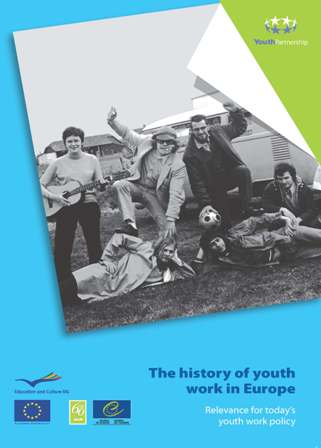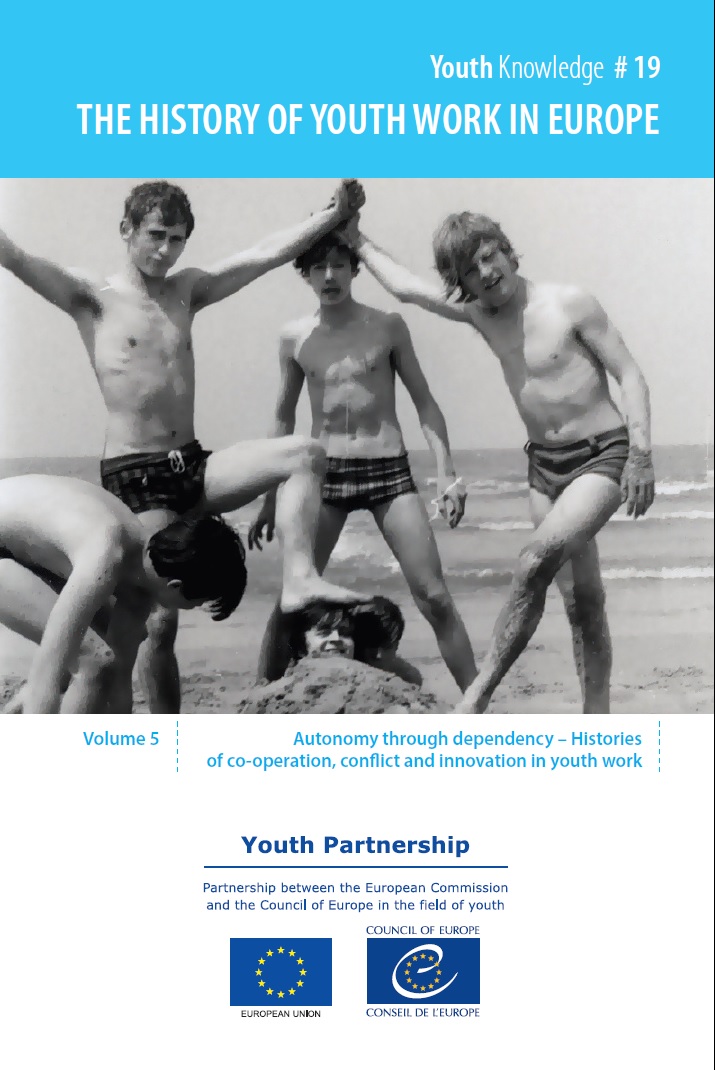The history of youth work in Europe and its relevance for youth policy today

Edited by Griet Verschelden, Filip Coussée, Tineke Van de Walle and Howard Williamson.
Council of Europe, 2009 978-92-871-6608-1
Youth work is a polyvalent and multi-faceted practice. It takes place in a wide range of settings, varies from unstructured activities to fairly structured programmes, reaches a diverse array of young people, touches upon many different themes and cuts across several other disciplines and practices. This versatility is one of the strengths of youth work, but at the same time it may lead to fragmentation and product vagueness.
In this book we take a historical perspective that aims to identify the close links between youth work developments and broader social, cultural and political developments. What are the beliefs and concepts that underpin youth work? How do they relate to the recurrent youth work paradox, that youth work produces active and democratic citizens but at the same time seems ineffective for young people who are excluded from active citizenship? Tracing back the roots of youth work and identifying different evolutions within and between countries help to initiate a fundamental discussion on modern-day youth work identity and to cope in a constructive way with the recurrent paradoxes of youth work.
The different authors highlight the youth work policies in Belgium (Flanders), Germany, England, Poland, Malta, France and Finland.
Download The history of youth work in Europe and its relevance for youth policy today >>
The history of youth work in Europe and its relevance for youth policy today is also available in Bulgarian

Lasse Siurala, Filip Coussée, Leena Suurpaa and Howard Williamson (eds.)
Council of Europe, 2016. 978-92-871-8161-9
The “History of youth work in Europe” series aims to achieve better understanding of current challenges in youth work and youth policy. Volume 5 addresses questions like: How have government policies and administrative practices during the past decades affected youth work? What kind of strategies has youth work developed to react to them and to create a positive space for work with young people? Can educational approaches of youth work, like social pedagogy, help mediate between young people in their ever-changing lives and society? Co-operation between youth policy, youth research and youth work has been called “the Magic Triangle” – but is the magic still there?
This publication discusses these and other topics from a variety of perspectives. The authors come not only from Europe, but also from the USA, Australia and South Africa, providing a refreshing comparative reflection on youth work issues and opportunities, which is revealed to be global in nature. They also have diverse and varied backgrounds in youth research, youth work, youth policy making and youth worker training. This comparative historical perspective puts some of the pieces of the “youth work puzzle” together, while many are left unconnected. It also becomes apparent that there is an element on randomness in the historical development of youth work. Many structures, policies, approaches and methods are not “historically necessary”. Rather, many things could have come out differently. This volume on the history of youth work provides many readings: it provides a rich collection of national youth histories to complement and build upon the four earlier volumes, and histories and analyses of youth work for readers to compare with their own experience, sharpen their critical view and inspire their thinking.
